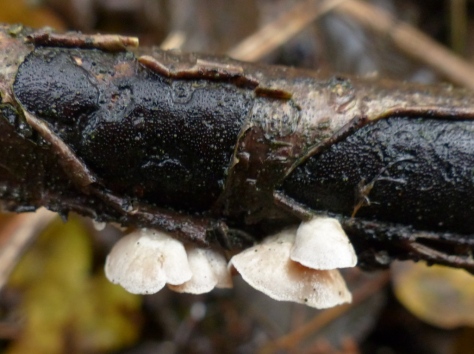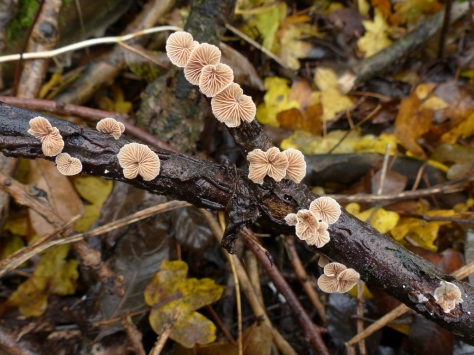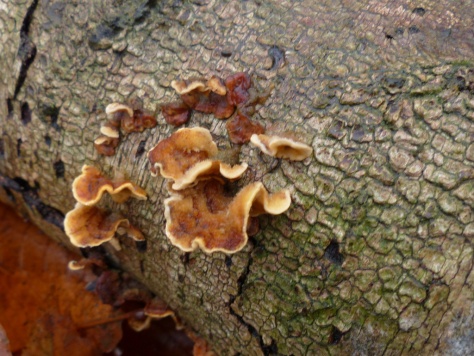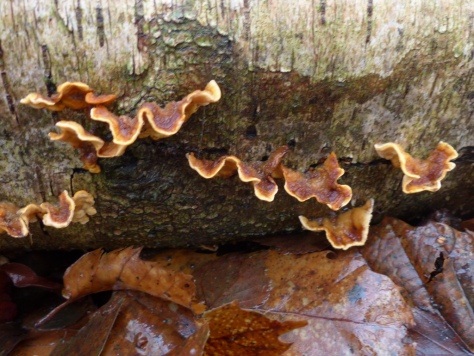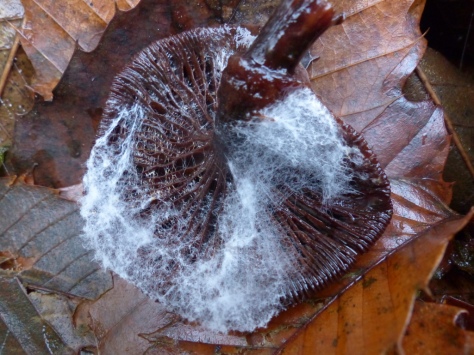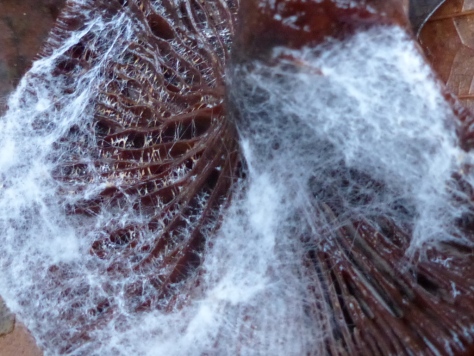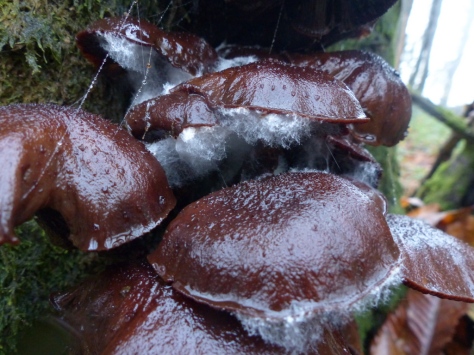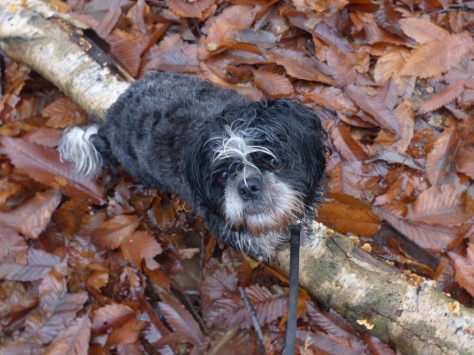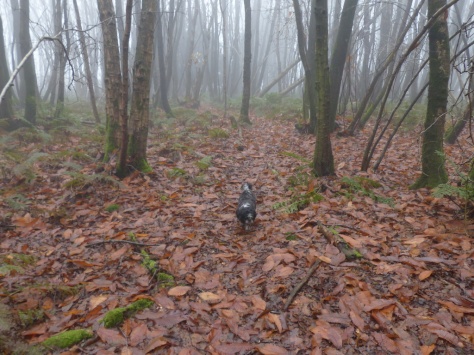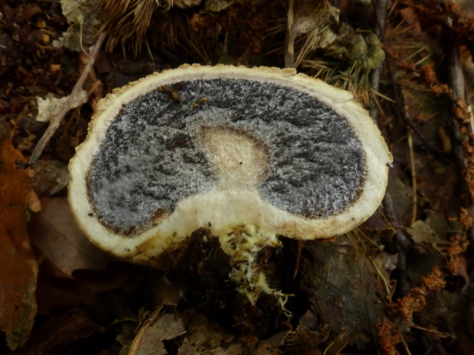Now with new improved Fizz.
By the time Fizz and I got out yesterday it was getting dark and there was no chance of getting any decent pictures. This morning it seemed a bit brighter and we decided to have another try.
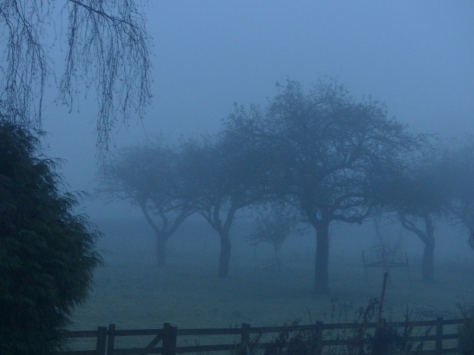 This fog was to the South and on the hills. First we are heading North to Badger Alley, it is not so bad there.
This fog was to the South and on the hills. First we are heading North to Badger Alley, it is not so bad there.
Yesterday I found some more Oysterlings and I want a chance to photograph them.
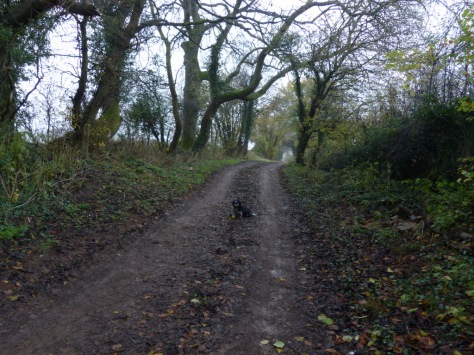 I have heard Oysterlings described as the most photogenic of fungi and I didn’t think that when I found them growing on slimy green vegetation.
I have heard Oysterlings described as the most photogenic of fungi and I didn’t think that when I found them growing on slimy green vegetation.
 These look quite a bit nicer. These mushrooms have got legs, there are lots of little ones still to come so I shall be back to visit these again soon.
These look quite a bit nicer. These mushrooms have got legs, there are lots of little ones still to come so I shall be back to visit these again soon.
So that is the Oysterlings. Next….
Don’t eat yellow snow!
Remember our Pear-shaped Puffballs?
 I told you that all Puffballs were edible but that you must cut them and make sure that they are pure white inside. I need to show you what I mean.
I told you that all Puffballs were edible but that you must cut them and make sure that they are pure white inside. I need to show you what I mean.
I am reluctant to take another one of these as I want to watch them mature and decay but this is an important stage in their development. So selecting the biggest one….
 This one has started to yellow. You shouldn’t eat them like this.
This one has started to yellow. You shouldn’t eat them like this.
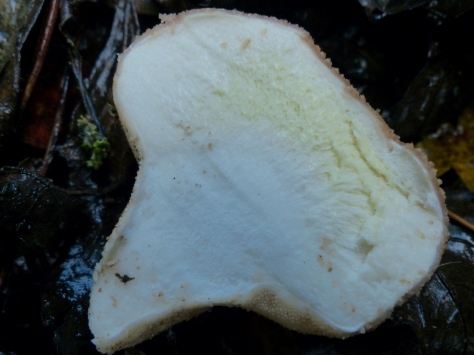 Now this isn’t where we are going today. Fizz and I are going back up to the Sweet Chestnut Coppice to look at the Honey mushrooms that we saw about two weeks ago. The coppice is up there in the fog.
Now this isn’t where we are going today. Fizz and I are going back up to the Sweet Chestnut Coppice to look at the Honey mushrooms that we saw about two weeks ago. The coppice is up there in the fog.
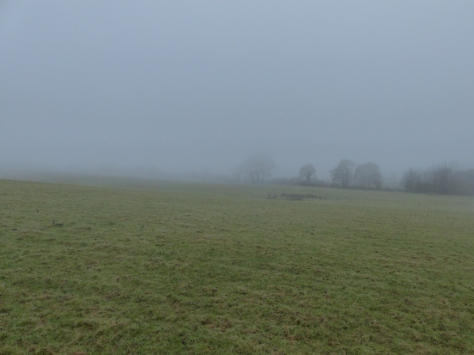 I have to keep Fizz off the road as much as possible so we are going through the fields. Here are your Fizz shots for today.
I have to keep Fizz off the road as much as possible so we are going through the fields. Here are your Fizz shots for today.
 I am afraid that I have already got her messed up a bit and she is no longer “fresh back from the cleaners.”
I am afraid that I have already got her messed up a bit and she is no longer “fresh back from the cleaners.”
Fizz in Fog.
 Eventually we have to take to the road but we have by-passed the narrowest parts.
Eventually we have to take to the road but we have by-passed the narrowest parts.
 Once we get up here we are safe and can walk on the grass.
Once we get up here we are safe and can walk on the grass.
 Here is the wood we have come to visit. You can just tell that the light in there is going to be perfect for photography.
Here is the wood we have come to visit. You can just tell that the light in there is going to be perfect for photography.
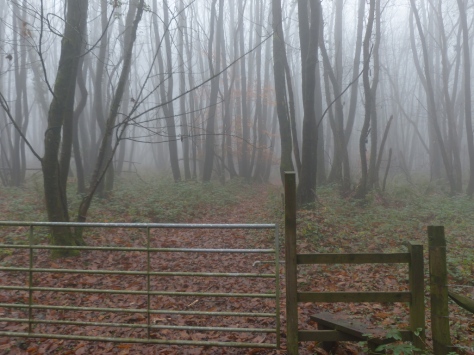 This is what I have to put up with every day in England!
This is what I have to put up with every day in England!
I quite like fog it is better than constant rain 🙂
So where did we leave that tree?
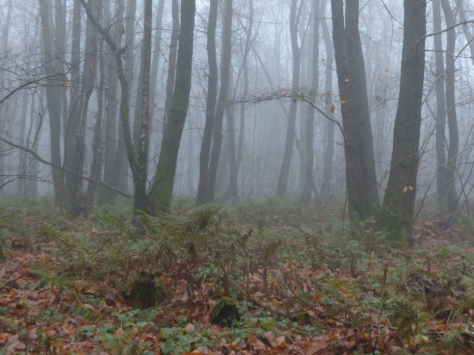 So here is our first fungi in the coppice. This is Hairy Curtain Crust, Stereum hirsutum. This grows all over the world and you will find it in Australia and North America. It is very common and we will see a lot more in the next couple of months.
So here is our first fungi in the coppice. This is Hairy Curtain Crust, Stereum hirsutum. This grows all over the world and you will find it in Australia and North America. It is very common and we will see a lot more in the next couple of months.
 What sort of an idiot are you? Just asking.
What sort of an idiot are you? Just asking.
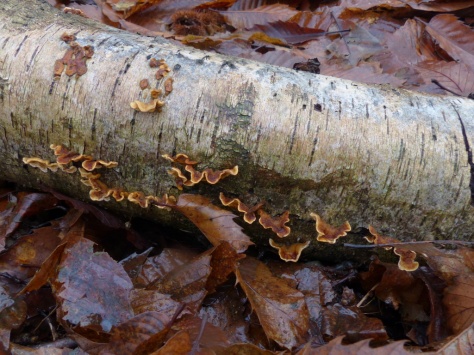 Notice that she was on a lead in those last pictures. I have just heard an animal moving about in the woods. We don’t get to see it. It was probably Deer, there are a lot of them around here but there are also Wild Boar and Boar would be dangerous for Fizz. (they might knock her off her log) She is safe so long as she stays close.
Notice that she was on a lead in those last pictures. I have just heard an animal moving about in the woods. We don’t get to see it. It was probably Deer, there are a lot of them around here but there are also Wild Boar and Boar would be dangerous for Fizz. (they might knock her off her log) She is safe so long as she stays close.
My next find is a stinker.
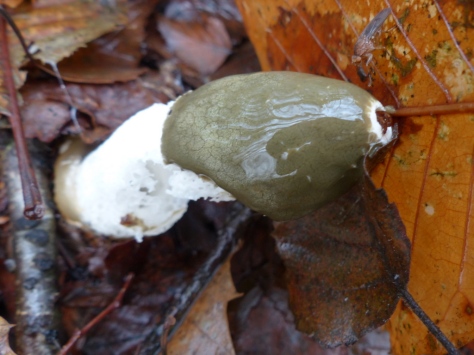 Phallus impudicus, this is a Stinkhorn Fungus and it is living up to it’s name. I don’t often find them with the gleba intact like this (Gleba is the disgusting bit), flies are usually quick to eat that bit but I guess in Winter there are not so many flies around. This specimen has been hanging about for a bit and is truly repulsive.
Phallus impudicus, this is a Stinkhorn Fungus and it is living up to it’s name. I don’t often find them with the gleba intact like this (Gleba is the disgusting bit), flies are usually quick to eat that bit but I guess in Winter there are not so many flies around. This specimen has been hanging about for a bit and is truly repulsive.
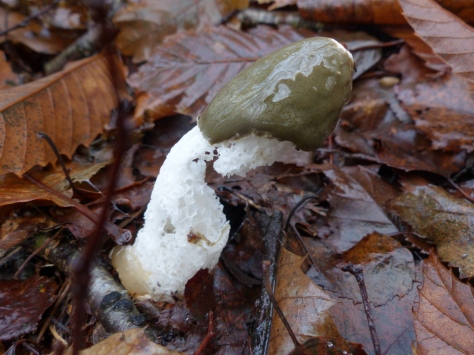 I want to have a closer look. I am a boy and I like disgusting things 🙂
I want to have a closer look. I am a boy and I like disgusting things 🙂
I need to dig it up and see it’s egg.
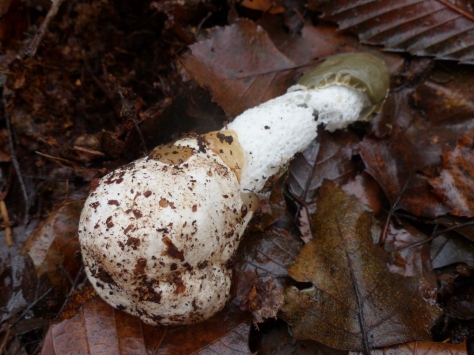 Sadly it broke when I lifted it. The stem is very hard and brittle.
Sadly it broke when I lifted it. The stem is very hard and brittle.
 Inside the stem is sitting in the egg but does not seem to be attached to it in any way.
Inside the stem is sitting in the egg but does not seem to be attached to it in any way.
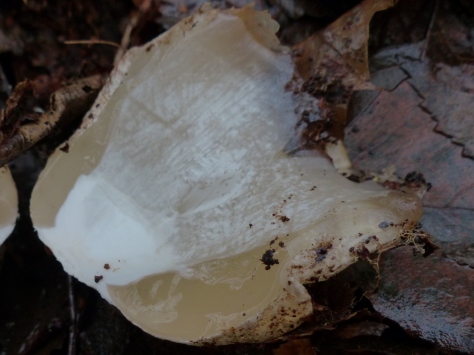 Up at the other end the stem didn’t seem to have any attachment to the cap either. The cap just slid off and slimed everywhere and it stank.
Up at the other end the stem didn’t seem to have any attachment to the cap either. The cap just slid off and slimed everywhere and it stank.
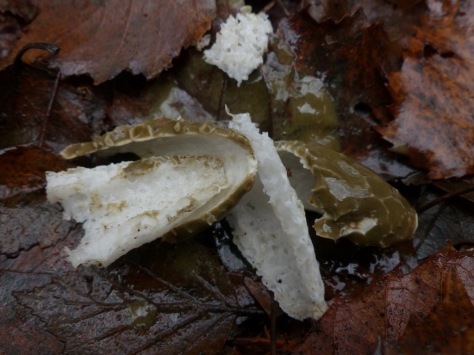 Interesting but that’s enough of that.
Interesting but that’s enough of that.
Let’s move on to the Pigskin Poison Puffball.
These are the decaying remains of the Common Earthball, Scleroderma citrinum.
 Quite a few of them had opened like cups and now contain a soup of poisonous spores and rainwater. (I need to photograph all aspects of a fungi’s development.)
Quite a few of them had opened like cups and now contain a soup of poisonous spores and rainwater. (I need to photograph all aspects of a fungi’s development.)
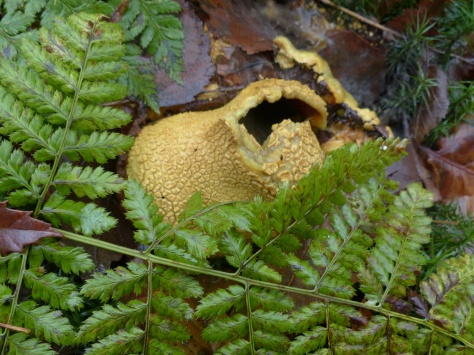 Then finally we found our Honey Fungus. That too was decaying.
Then finally we found our Honey Fungus. That too was decaying.
 I was very interested to find that my Honey Fungus, Armillaria ostoyae was itself being attacked by another fungus. This is some kind of parasitic fungi. I don’t expect to be able to get an ID on it but I am trying to find out more as we speak.
I was very interested to find that my Honey Fungus, Armillaria ostoyae was itself being attacked by another fungus. This is some kind of parasitic fungi. I don’t expect to be able to get an ID on it but I am trying to find out more as we speak.
One expert has already advised me to collect some in a tupperware container and see what develops. Hmm….. Not sure that I am ready for the responsibility of keeping another pet.
If I find out anything then I shall let you know.
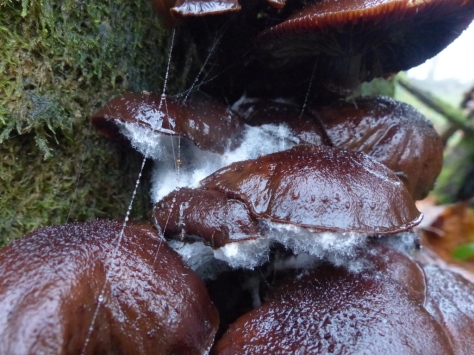 Did I tell you that Winter cut really suits you? You look lovely.
Did I tell you that Winter cut really suits you? You look lovely.
(Ha ha! I remembered to read the back of my hand)

